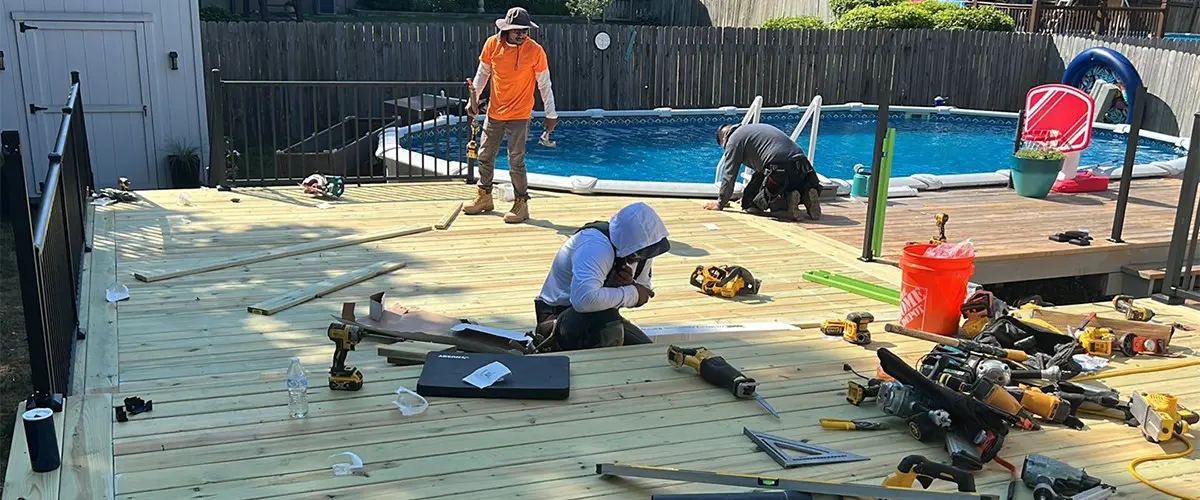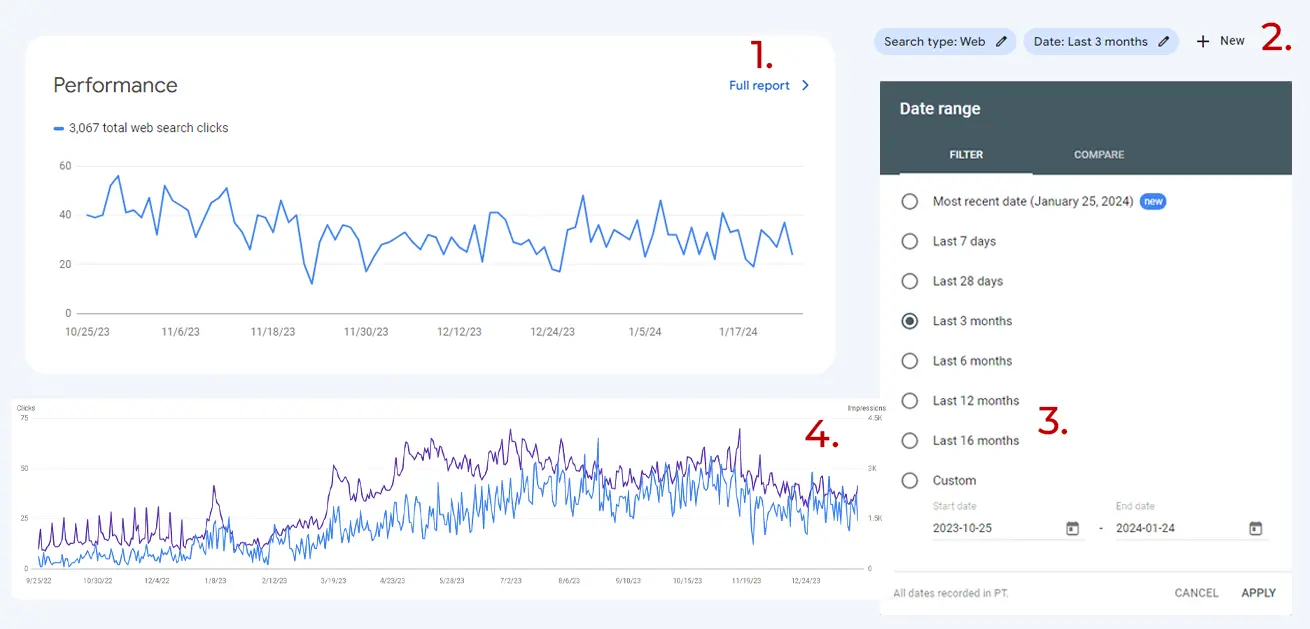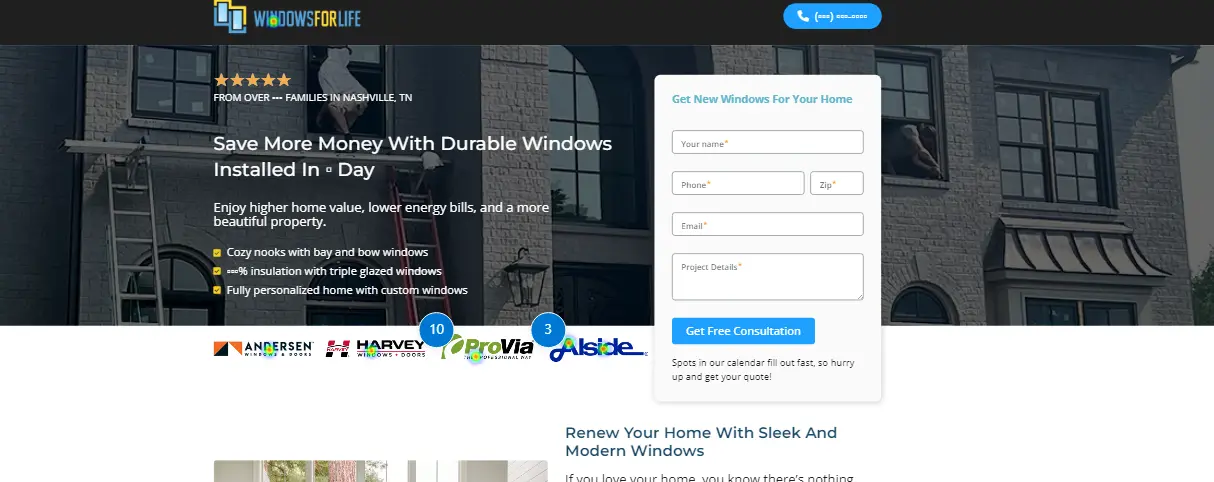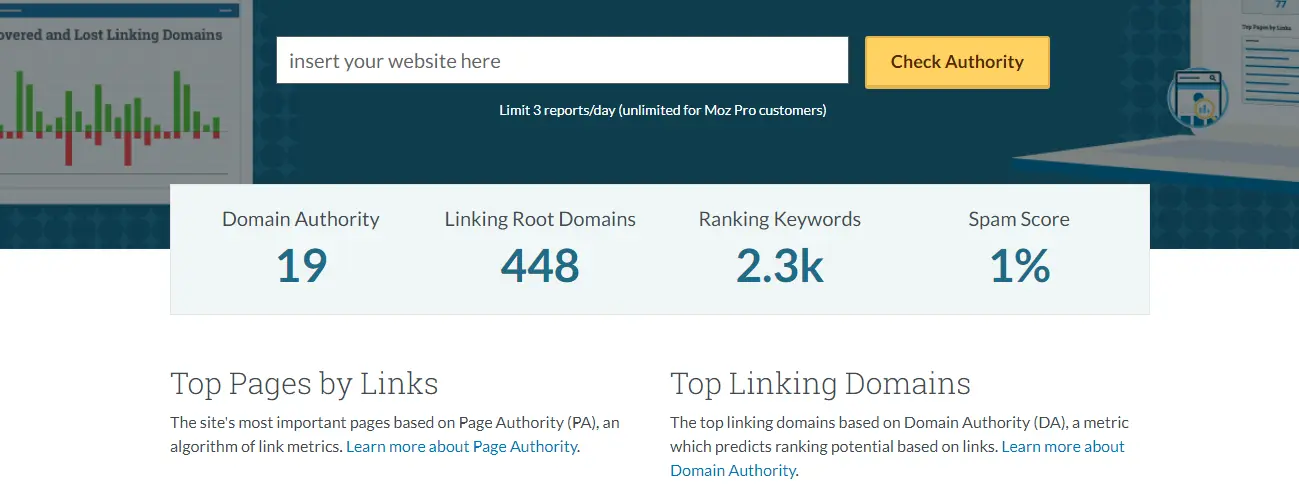#1. Use A Website Performance Tester On Your Site
Your site’s performance has a huge impact on your contractor SEO strategy. More precisely, on how it ranks on search engines, e.g. Google.
A performance tester examines the speed, accessibility, and SEO of your website and gives you the steps required to fix the problems (if any).
There are 2 sites we would trust to measure the performance of any page.
- PageSpeed Insights is a great tool that will give you insights into your site’s overall performance and how to improve it.
- GTmetrix requires you to sign up, and it shows the most important factors that slow down your site’s performance.
Google loves websites that load fast. If yours is built right, it’ll get a boost in rankings just because of that.
Load speed also matters for first-time visitors but not so much for returning users. Those will already have your website’s cache, so the page will load faster.
#2. Check Your Contractor SEO Stats On Google Search Console
Google Search Console (or GSC) is one of the most important tools that Google offers us to track our website’s performance online.
If you have someone doing the contractor SEO strategy for you, they should have access to the Google Search Console.
If they don’t, that’s already a bad sign.
On this tool, you’ll see what pages rank, which of your blog posts get traffic, the click-through rate of all pages, their position on Google, what queries (or keywords) they pop for, and a lot more.
If your contractor SEO is working properly, you should see a traffic increase on your website.
Here’s how to check:
- Log in to Google Search Console with the Google account that has access to your domain.
- In the Overview, in the Performance section, click on “Full Report”.
- Above the graph, the default filters will be “Search Type: Web” and “Date: Last 3 months”.
- Click on Date and select how recent you want the data on the graph to be, preferably 16 months.
If you’ve set the date to 16 months or over and there is no traffic growth, you can start asking questions.
If the timeline is shorter, decreases in traffic can be attributed to seasonality or simply your competitors doing more SEO than you recently.
#3. Check SEO Insights With Google Analytics
Google Analytics (or GA) is similar to GSC, but it shows you more in-depth information about the traffic on your website.
While GSC only shows traffic from Google search results, GA shows you traffic from different sources online, like referrals, direct clicks, social media, and other links.
As its name implies, this tool is meant to analyze the traffic on your site and gives you many insights into how you could improve your pages.
#4. Check User Behavior With Microsoft Clarity
Microsoft Clarity is a newer tool that we love using for many of our clients to gather in-depth insights about user behavior on any page on a website.
This tool works like GA, but it has an edge.
It registers where users click, how much they scroll, and it even records instances of their activity on different pages.
It’s true it still has some glitches, but it’s great if you want to optimize a page to perform better and rank for more keywords. Your contractor SEO doesn’t depend on this, but it’s definitely a tool that can get you some valuable insights into how your website is doing.
#5. Keep An Eye On Your Local SEO
As a contractor serving people locally, ranking with your Google Business Profile as well as your website is a must for a healthy contractor SEO strategy.
Don’t have a Google Business Profile yet? These are essential for brick and mortar businesses but also any business that offers a service locally, like a construction business. Check out this guide on how to create a Google Business Profile.
These work hand in hand, and if you have both of them in the top 3 search results, you’re already doing better than most of your competitors.
The difference between SEO and local SEO is small but impactful.
Throughout your website’s pages and posts, you need to mention the locations you serve so Google understands you operate locally.
The best way to tell if your local SEO is doing well is to check how your Google Business Profile ranks in the areas you serve.
Here at Contracting Empire, we’re using a tool that allows us to see how any Google Business Profile ranks for different keywords, and what we need to increase these ranks. You can get an audit here.
#6. Check Your Contractor SEO Keywords
Here’s a huge difference that maybe you didn’t know how much matters.
In the peak of the season, the keyword deck building has over 8,000 searches, while the keyword deck construction has just around 5,000.
This means that if your website and service pages target deck construction instead of deck building, you’re missing out on 3,000 potential traffic that can turn into customers.
Keywords like remodeling or renovating also have different search volumes, so make sure you research which one is more favorable to your website.
#7. Check Your Domain Authority
Domain authority shows how relevant, trustworthy, and helpful your website is.
For example, IKEA’s website is much more popular than a new website. That’s because IKEA has a lot of links that lead to it, a lot of traffic, and overall a lot of value on the internet.
If your domain (website) authority is growing, your SEO is going in the right direction.
But how do you check your domain authority?
This is a free tool that allows you to check up to 3 domains per day. It shows not just the website’s authority, but many more insights that will come in handy in analyzing your contractor’s SEO strategy.
Tip: Increase your domain authority on Google by getting citations on the biggest contractor directory listings. We’ve made a list with the best business directories for contractors. Check it out!
#8 Make Sure Your Contractor SEO Strategy Targets The Right City
A lot of contractors are targeting high-population areas and wondering where are the leads or the rankings.
High-population areas mean a lot of competition. And if your business is the underdog, fighting to overrank a contractor with hundreds of reviews, you won’t stand a chance.
What you need to do is target a lower-population area with higher household income. Being a less crowded place, the competition here won’t be as tough, and you’ll get a good shot at ranking higher.
We’ve made a great tool that helps contractors find out which cities are best to target. It’s free, easy to use, and anyone could do it. Curious to see which cities around you are best to target? Use this!
What If Nothing About My Contractor SEO Strategy Is Working
So, if:
- Your website’s performance is low
- Your website’s traffic didn’t increase for over 12 months
- You can’t analyze any data on Google Analytics or Microsoft Clarity
- Your Google Business Profile is not ranking high enough
- Your contractor’s SEO strategy targets the wrong keywords
- Your website’s domain authority is low
- And you’re targeting the wrong cities and areas
Then there’s a lot of work that needs to be done.
But you can’t sacrifice your time growing the business to fix some (more or less) complex SEO issues with your website – it’s just not worth it. And even if you did, do you know how? If there’s one thing you want to avoid, is making things worse.
Just like homeowners need your service to get their home improvement projects done, you need an expert to take care of these website issues before they get out of hand.
Conclusion
This checklist is a great way to find out if your contractor SEO strategy is working or not.
But this is just the tip of the iceberg – the quicker things you can look at today and see if your marketing budget has made any difference.
There are dozens of other strategies, tactics, tricks, and even shortcuts that can help your contracting business take off.
You just need someone reliable to start with.

Gabriel Iacob, Local SEO And Copywriter @ Contracting Empire
Gabriel is our local SEO specialist that makes sure your website and content are optimized to bring in high-value local leads. He loves to dive deep and research your customer’s behavior online, but also what ranks your business higher.
In his free time, Gabriel loves riding his custom-made mountain bike, hiking, and discovering new music.






